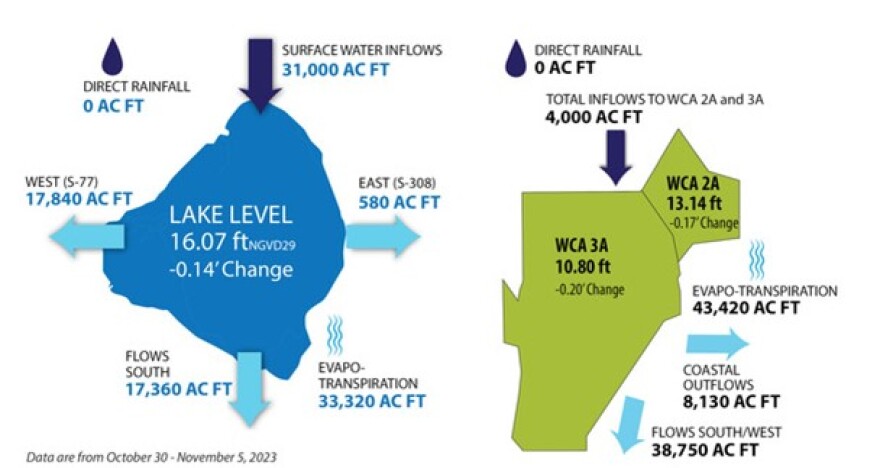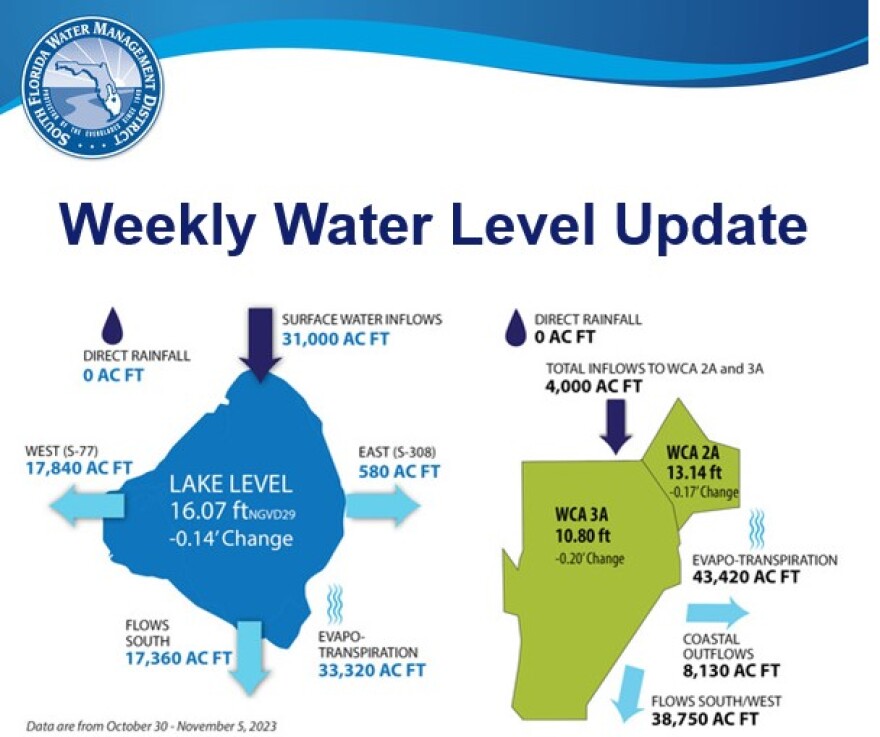South Florida - Wednesday November 8, 2023: Here are the latest water levels in key south Florida water bodies from data collected between October 30 through November 5. Total volumes are reported in acre feet (AC FT).
This data is provided weekly by the U.S. Army Corps of Engineers (USACE) to the South Florida Water Management District (SFWMD).
The USACE is the primary agency responsible for Lake Okeechobee management. The Corps makes adjustments to help manage lake levels with consideration to factors including current conditions and protected species.
The South Florida Water Management District continues to closely monitor algal activity, oysters, sea grass, and other conditions in and around Lake Okeechobee.
- Lake Okeechobee: 16.07 ft, 0.18 ft below the intermediate sub band
- WCA 2A: 13.14 ft, 0.73 ft above regulation schedule
- WCA 3A: 10.80 ft, 0.30 ft above regulation schedule
Water levels (“elevations”) represent average for the day and are reported in NGVD29, a scientific measurement of the level of water in comparison to sea level. Change in stages are calculated based on average daily stages of water bodies and may not fully capture the actual stage change over the week. All data provided in this update is provisional and subject to quality assurance and quality control review.

Publicly-Available Resources
- Water levels, flow volumes and current water conditions
-Overview of how water management works in South Florida
-Current environmental conditions, including Stormwater Treatment Area conditions - U.S. Army Corps of Engineers - Jacksonville District
- South Florida Water Management District
Learn More About Long-Term Projects to Improve Water Management in South Florida
The South Florida Water Management District remains committed to advancing projects to improve water levels and reduce harmful discharges to the Northern Estuaries. Learn more here.
To sign up for weekly updates on South Florida’s water conditions, visit: email signup page. Enter your email address and check the “Key Water Conditions, including Lake Okeechobee Discharges” box.


